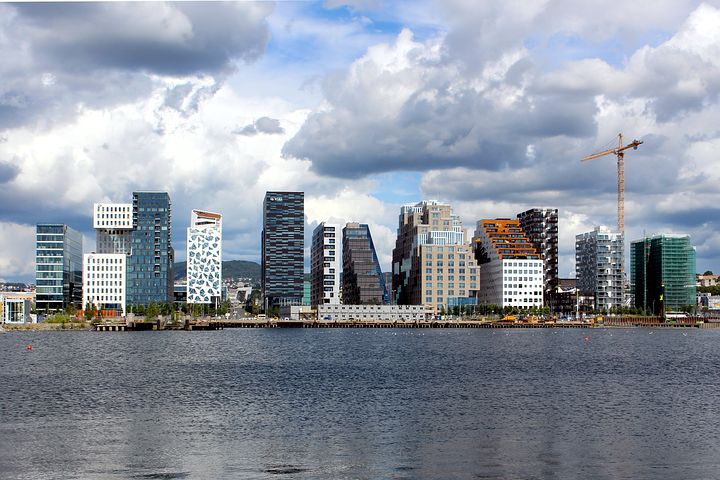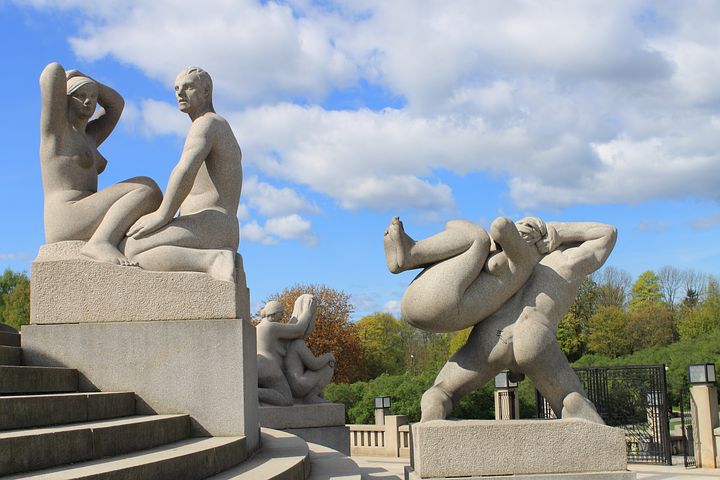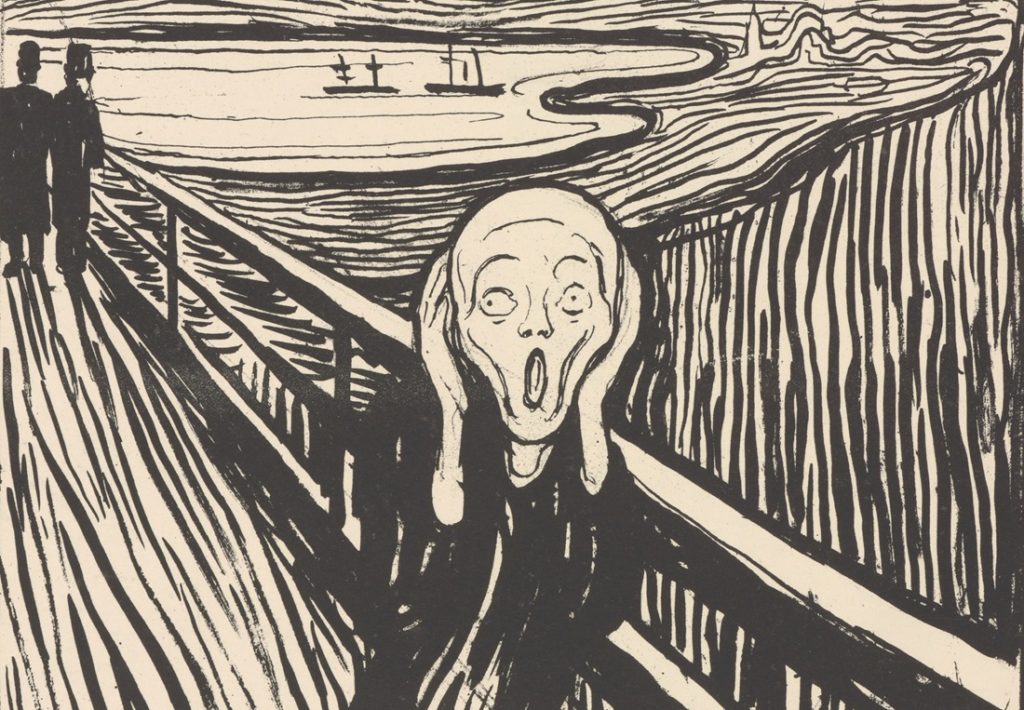
The last time my wife and I were in Oslo, we did exactly what contributing writer Robert Waite advises against: we skipped town too quickly, flying off to Bergen and our Hurtigruten coastal voyage the day after we arrived.
Walking around Oslo during our free afternoon there, on a beautifully sunny late spring day, we soon realized our mistake. It had been some years since we’d been to the city, and much had changed — by the looks of it, much for the better. But I’ll let Bob delve into all that.
One particular memory stands out among the people we encountered there.
After having dinner at a local restaurant on the evening of our arrival, I left a tip in cash that I knew was way too extravagant — but since I had only large bills that had been dispensed from an ATM, it was that or nothing.
As we were walking out of the restaurant, the owner stopped us and returned the money. “This is far too much,” he explained in a mild rebuke. “You must be Americans.”
Guilty as charged. But it was the kind of gesture that made us wish we had budgeted more time to linger in Oslo — a city much livelier and more diverse than we had remembered. Now, onto Bob Waite’s report:
By Robert Waite
Oslo – Oslo, Norway’s capital, often gets overlooked by travelers. Perhaps it is because, like Monty Python’s mythical Norwegian Blue Parrot, we so pine for the fjords that we hurry past the city, transiting to Bergen to catch a Hurtigruten or other coastal ship.
Or perhaps we just assumed that a place with an “O” at both ends of its name must be boring (no offense, Ohio).
We once fell into this trap. Back in 1994, my spouse and I attended the Lillehammer Winter Olympics. It was a magical experience. We were whisked from Gardermoen International Airport to Lillehammer, where we stayed in a comfortable event-built pre-fab hotel (which was later broken down into two sections, with one shipped to Norway’s far north; the other to Bulgaria).
After witnessing the closing ceremonies, we were whisked back to the airport.
Amid all that whisking, nobody suggested lingering in Oslo.
Over time, we realised this had been a mistake. Thus, when we planned a pre-COVID Norwegian journey, we made sure we took time to explore the city prior to heading over to Bergen. We were glad we did – and you should consider doing the same.

Mid-sized city, big-city amenities
Oslo can best be described as a mid-sized city with big-city amenities and ambitions. The city’s urban area has a population of just over a million and the metro region about 1.7 million – in the range of an Austin, Texas; a Calgary, Alberta; or a San Diego, California.
Once called Christiania, the city emerged as Norway’s capital in 1814 when the country became an independent Kingdom, one aligned with the Kingdom of Sweden. Full Norwegian independence came in 1905 and it was only in 1925 that the city’s name changed to Oslo.
For much of its history, whether independent or tucked uncomfortably under the wings of Sweden or Denmark, Norway was relatively poor by European standards. With a challenging climate, a small population and a dearth of arable land, the economy was centered on fishing and timber.
Then came WWII. Norway, unlike Sweden and Switzerland, found itself on the front lines against Nazi aggression. The results were devastating: the poor country became even poorer.
After the war the United States, to show its gratitude to the brave little nation, brought over and trained Norwegian medical students; in the late ‘40’s my Dad, for example, had a dozen Norwegians among his classmates at Tufts Dental School in Boston.

Oil boom transformation
Thanks to the post-war discovery of oil in an adjacent section of the North Sea, all of this is difficult to believe today. Oslo and Norway have among the highest per capita incomes in the world. Oslo is often ranked just after Tokyo as the world’s most expensive city.
With this cash infusion has come significant investments in infrastructure, culture and education, from a tuition-free university system to new museums. Oslo today has world-class restaurants, beautiful public buildings and spacious, well tended parks and open spaces (where my wife observed approvingly that almost all the individuals wheeling baby carriages were men).
If you are interested in architecture, two fairly recent structures near the city center stand out – the Oslo Opera House, which in its own way rivals Sydney’s, and the Astrup Fearnley Museum. Whereas the Sydney structure evokes sails and sits adjacent to the city’s harbor, the Oslo Opera House, also sited waterside, brings to mind a glacier floating on the water. Completed in 2008 at a cost of 500 million Euros, it is stunning both inside and out.

Wealth of museums
The current incarnation of the private Astrup Fearnley Museum, designed by Renzo Piano, was completed in 2012. It features works of Norwegian and International contemporary art and, for better or worse, is sometimes associated with the stir created in the international art world when it purchased the American artist Jeff Koons’ monumental sculpture of pop star Michael Jackson, with his favorite chimpanzee, “Bubbles”, for $5.1 million.
For those of you who are fans of Edvard Munch (and who didn’t have a poster depicting “The Scream” on a dorm or cubical wall at some point?), the Munch Museum might be to your taste.
It, too, had its moment of fame. Back in 2004 thieves made off with a 1910 version of “The Scream” and another painting, “Madonna.” Both were recovered in 2006 – and the museum itself has since been relocated to a presumably more secure building.
Another spot worth a visit is the Nobel Peace Center. Under the terms of Alfred Nobel’s prize legacy, Oslo hosts the awarding of the Nobel Prize for Peace.
The museum is modest, but interesting. Each winner is honored with a small digital illuminated display. A few individuals – Myanmar’s Aung San Suu Kyi is one example – have had their illumination dimmed, signifying subsequent second thoughts. We can report that the lights for both Barack Obama and Henry Kissinger remain on.

A must-do excursion
There is much more to see in the central part of the city, but for us the absolute highlight was visiting Bygdoy Peninsula. It features a number of museums and places of interest. You can get there by ferry or bus; we decided to head out by bus and then take the ferry back, which afforded a great view of Oslo’s waterfront.
Once we reached the Norwegian Folk Museum by bus, we walked to the other attractions, which included the Vikingskipshuset (which houses spectacular Viking-era preserved items, including three classic long boats from circa 900); the Kon-Tiki Museum; and the Polar Ship Fram Museum.
For Boomers, the Kon-Tiki conjures up a National Geographic-worthy effort by Norwegian Thor Heyerdahl to demonstrate that the inhabitants of the South Seas, most notably those living on Easter Island, might have come from South America. He constructed a raft made of reeds and relied on the prevailing winds and current to propel him westwards.
The raft more or less worked, but the theory fell apart with the advent of DNA testing, which conclusively showed that Polynesians had come from the east (as an anthropologist explained to me on a visit to Easter Island).
Still, seeing the vessel brings back certain 1950’s memories – and reinforces the fact that Norwegians have been fearless and resolute explorers for more than a thousand years.
No Norwegian exemplified this daring more than Roald Amundsen, the intrepid explorer best known for beating Britain’s Robert Falcon Scott to the South Pole. The Polar Ship Fram Museum and an adjacent Norwegian Maritime Museum pay homage to this remarkable history.
There is much more to Oslo. Literary types will enjoy the Henrick Ibsen Museum. You can visit Vigeland Park, where the sculptor Gustav Vigeland’s eclectic works are on display. For those who enjoy open space, there are numerous parks, like Frognerparken, worth exploring. There’s even a museum dedicated to ski jumping, a sport where Norwegians dominate — Eddie the Eagle notwithstanding.
In short, Oslo should not be a transit point — but a place to linger, savor and treasure.
If You Go
Oslo is served by SAS, British Airways and Lufthansa, among other airlines. Norwegian Air, a less expensive alternative, recently filed for bankruptcy.
Everything in Oslo and Norway is expensive by North American standards. In terms of accommodation, we chose to stay at Frogner House Apartments, a moderately priced alternative to hotels. It was clean and comfortable.
In terms of restaurants, given the pandemic, it is best to check ahead. Pre-Covid, there were many fine choices with a wide variety of culinary offerings, aided in part by a recent influx of immigrants.
To dine in the style of Ibsen’s Norway, head to the Grand Café, where you will find herring, reindeer and arctic char on the menu. You might also find fermented skate – a fish buried in the sand to allow it to ferment. Unless you like ammonia or need reviving after fainting, you might want to give that one a pass.
One bargain for those over 60 is that you not only get senior discounts virtually everywhere, but so does your companion — no matter his or her age. Cougars and those possessing trophy wives take note.
You might wish to watch the Norwegian TV series “Occupied” (Netflix) or the film “The King’s Choice” (2016) before going. The first is set in the near future; the second in the WWII past. Both are instructive regarding Norway’s view of itself.
Author Bio: Contributing writer Robert Waite has written on travel for nearly 50 years; his previous posts for clarknorton.com include such far-flung destinations as Namibia, Rwanda, Albania, Cambodia (Angkor Wat), Laos, and Guatemala. He is also a professor at Seneca College in Toronto and Managing Partner at Waite + Co., a communications consulting firm with offices in Boston, Ottawa and Toronto.
READER COMMENTS:
Nice piece on Oslo! — Martha Waite
martha.waite@gmail.com












One Response to Linger in Oslo, Norway’s Cultural Capital